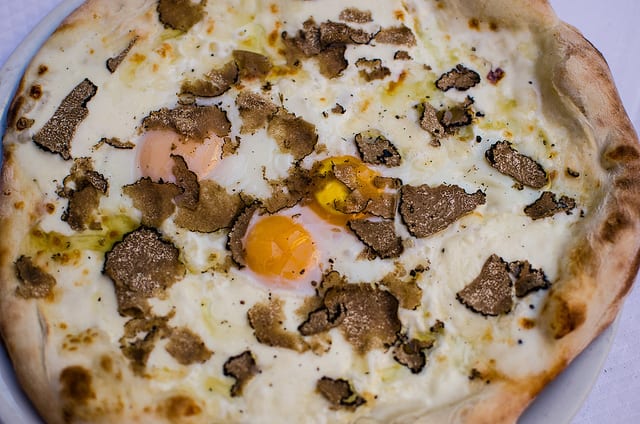
10 Italian Fall Dishes To Try: Pumpkin Tortelli, Vegetable Minestrone, + More
August 8, 2024
There are so many reasons to love autumn in Italy. With less people and nicer temperatures comes the harvest season…and delicious Italian fall dishes!
As well as being regional, Italian food is very seasonal. Recipes change depending on what produce is on offer (and what feels right to eat with the weather!). Fall in Italy offers an abundance of warm, hearty meals filled with in-season produce. We love Italian food, and we especially love these in-season dishes for a lovely fall day.
Table of Contents
ToggleCan’t-miss fall foods in Italy
Tortelli di zucca in Lombardia
Pumpkin is a classic fall food that is found throughout Italy in the autumn. The best, however, comes from the plains of Lombardia, especially Mantova (Mantua) in the southeast of the region. Try the tortelli di zucca (or, pumpkin tortellini), arguably Mantova’s most famous dish. Other great pumpkin options are risotto di zucca (pumpkin risotto) or zuppa di zucca (pumpkin soup).
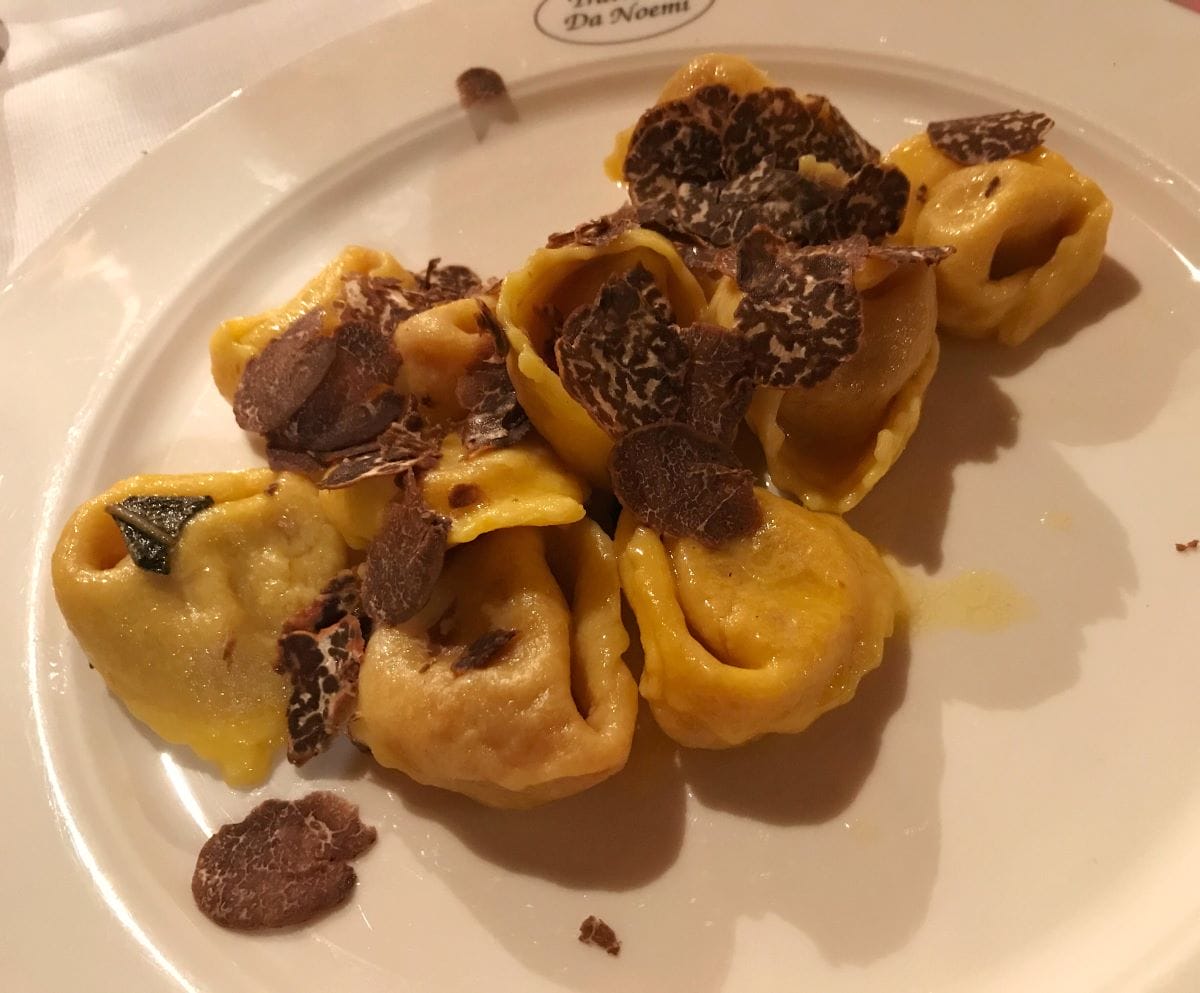
Pumpkin tortelli with truffle: a beloved autumn delight. Photo credit: Kirk K
Risotto con funghi porcini in Emilia-Romagna, Piedmont, Alto Adige, and Veneto
‘Tis the season for porcini mushrooms—and after winter’s intense cold sets in, you won’t see them again until May, and only briefly. Now, when the weather’s rainy and crisp, is when these little mushrooms are growing in the hills of central and northern Italy. Even if you don’t love mushrooms, try these: They’re like little melt-in-your-mouth bites.
You can find porcini mushrooms served alone (usually simply sauteed or grilled) as a contorno, or sprinkled on top of pastas, in the regions above and in Umbria and Tuscany, too. But we love the variety with risotto, a northern specialty.
Orecchiette con le cime di rapa in Puglia
Orecchiette is a small pasta originating in Puglia, shaped like little ears (orecchie is ear in Italian, –etto a diminutive implying smallness.) The concave shape makes sauces and oils stick to them, perfect for Puglia’s quality olive oil. Combine the two with orecchiette con cime di rapa, or broccoli rabe; a mix of local pasta, with local olive oil and the local broccoli harvest! Then move on to more of Puglia’s most famous (and delicious) dishes.
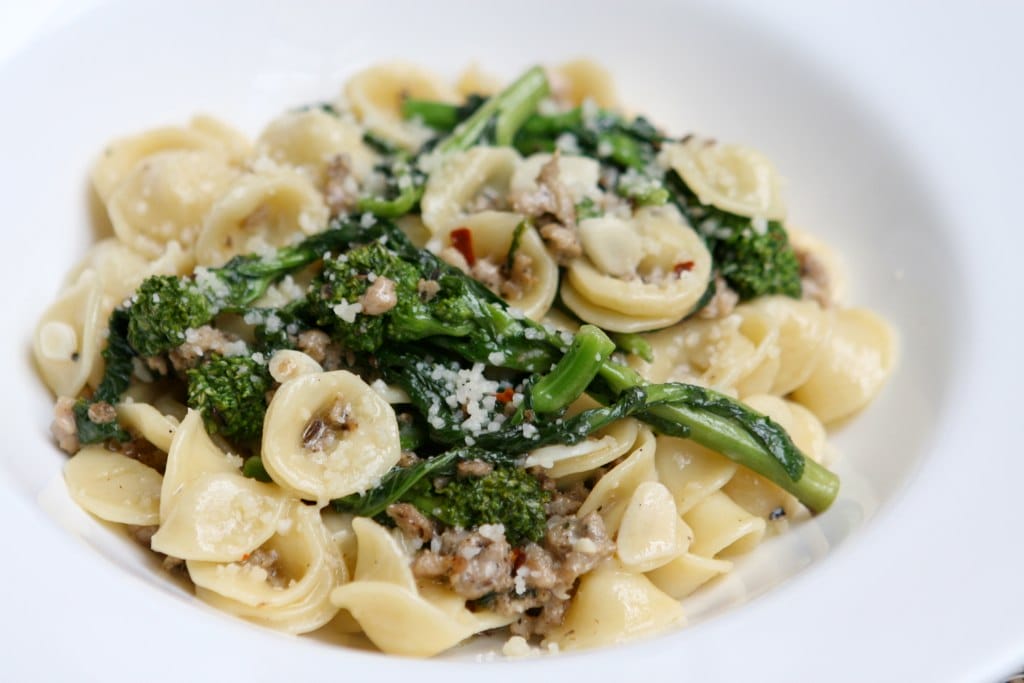
Orecchiette with broccoli rabe is a classic combination. Photo credit: Susan Lucas Hoffman
Castagnaccio in Tuscany and Umbria
Yes, you can find chestnuts year-round, at least being sold by vendors on the streets of Rome, but it’s best to steer clear. The best chestnuts are those fresh and in season in autumn and winter. You can find a variety of chestnut-based dishes across Italy (some quite creative, like a minestrone of chestnuts from Abruzzo or chocolate and chestnut-filled pasta which is some of the best food in Bologna and Emilia-Romagna).
Our favorite, though, is the castagnaccio, a dense cake made out of chestnut flour. It’s typically associated with Tuscany and Umbria, but you can find it in Lazio, Liguria, Piedmont, and Emilia-Romagna, too.
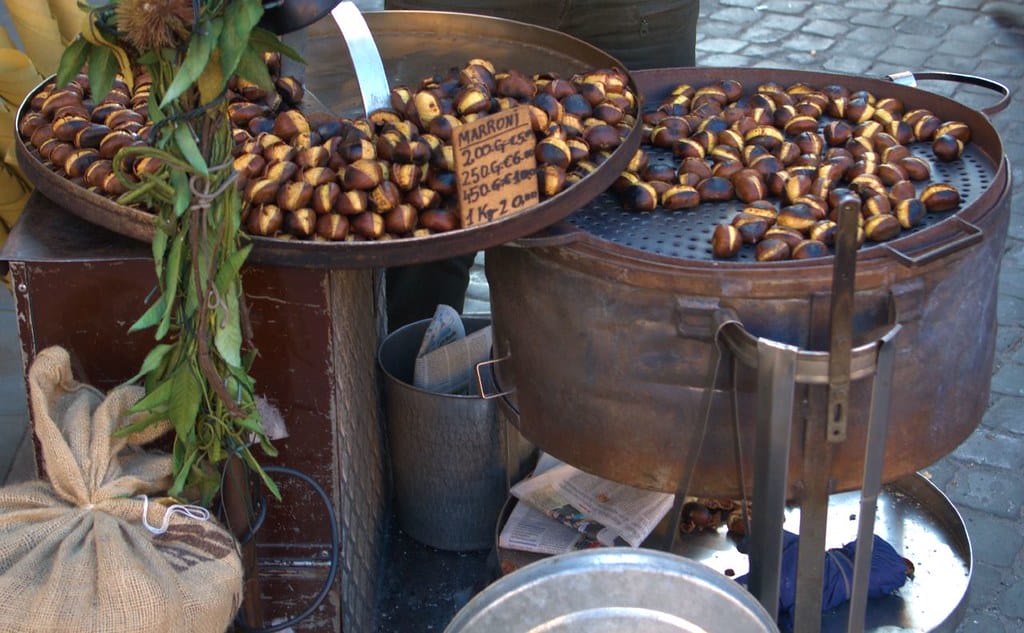
In Italy, roasted chestnuts are a popular street food, especially during the fall and winter seasons. Photo credit: L. Allen Brewer
Strangozzi al tartufo nero in Umbria
We love tartufo, or truffle in English, but we especially love local tartufo! A gourmand’s dream, truffles are the gems of the forest. They’re mushrooms, but unlike any you’ve ever tasted. Autumn means tartufo sagre throughout Italy. You can find truffles shaved on pastas, omelettes and in sauces in Piedmont, Lazio, and of course throughout all of central Italy, especially in the small cities throughout Umbria.
Try the always popular pasta al tartufo, more specifically the strangozzi al tartufo. If you’re feeling more adventurous, you can choose something with a bit more of the flavorful mushroom, such as crostini al tartufo nero, bread with a tartufo paste on top, or a tartufo omelet. Really, during truffle season you can order just about anything with it sprinkled on top!
Even though a pasta al tartufo is pricier than a carbonara, take it from us: Truffles are worth tasting once. At least.
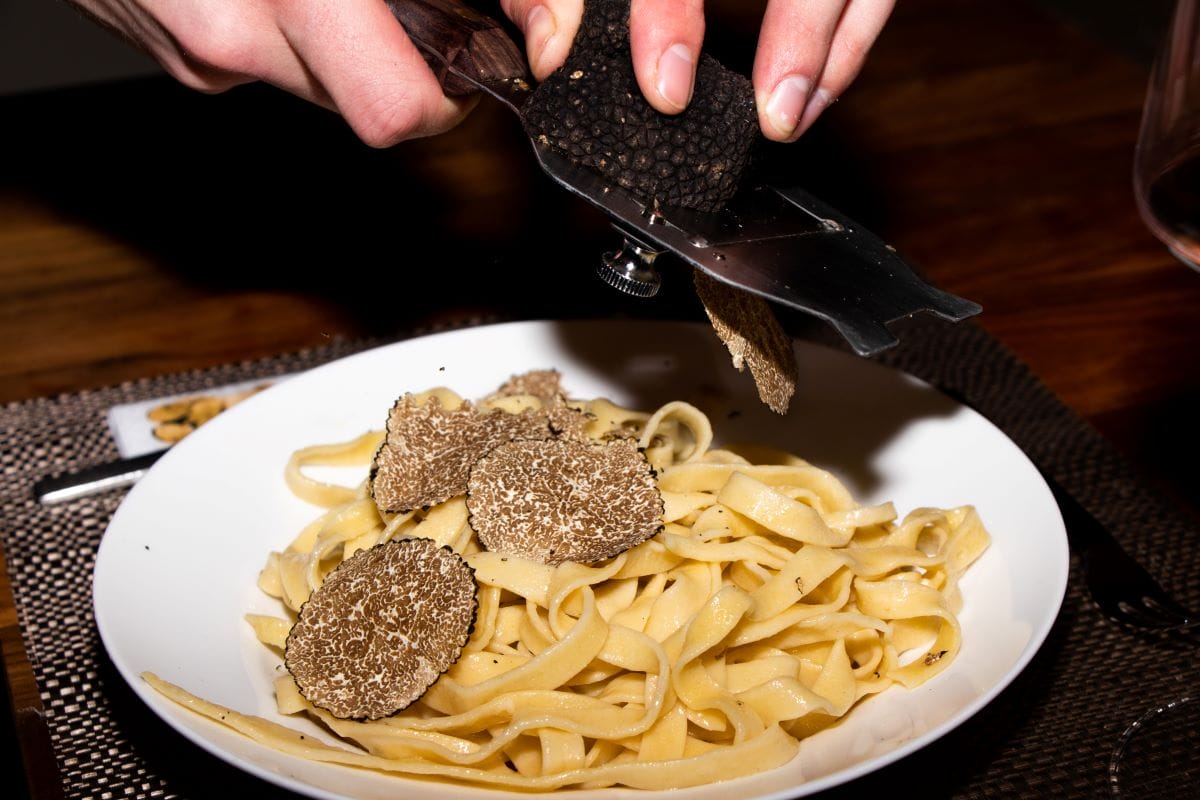
Truffles are expensive for their scarcity, difficulty in harvesting, and strong demand for their unique flavor. Photo credit: Vincent Dörig
Did you know? The concept of true Italian food doesn’t really exist? Italian cuisine is a diverse and regionally influenced culinary tradition, with each part of Italy contributing its unique dishes to the country’s culinary identity.
Pici al ragù di cinghiale in Tuscany
Tuscany is a mecca for Italian food lovers, and like Tuscans, this fall we’re searching for the more rustic tastes of traditional Tuscan food. Cinghiale might seem like a strange choice for some palettes, but the meat has a rustic taste that pairs perfectly with the outdoor trips through changing leaves and is just warm and hearty enough to beat the cold. Try the classic pici pasta with wild boar ragù or the ever-popular pappardelle with wild boar ragù.
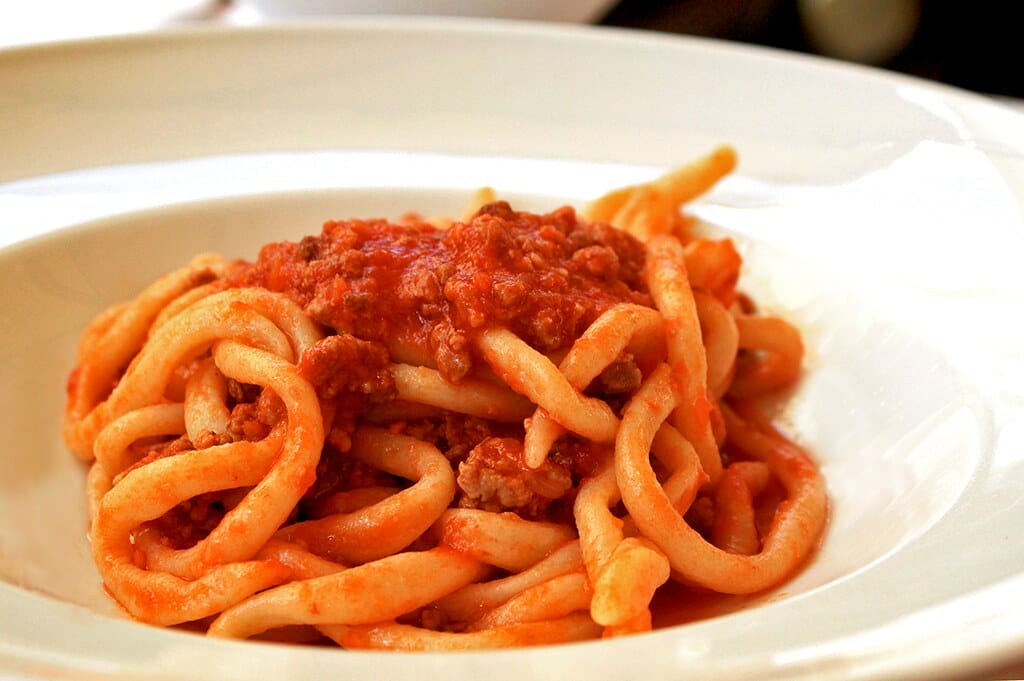
Pici al ragù is a classic Tuscan dish. Photo credit: Visit Tuscany.
Cinghiale alla cacciatora (all of Italy)
With November comes the start of hunting season on cinghiale, or wild boars. That means lots of opportunity to try this game, a particular favorite in Italy’s smaller towns and countryside. Although you can taste wild boar in salumi (especially in Tuscany and Umbria), ladled over pappardelle, or, of course, pici, we like it as this simple and delicious secondo, sauteed slowly with onions, carrots, celery, and spices.
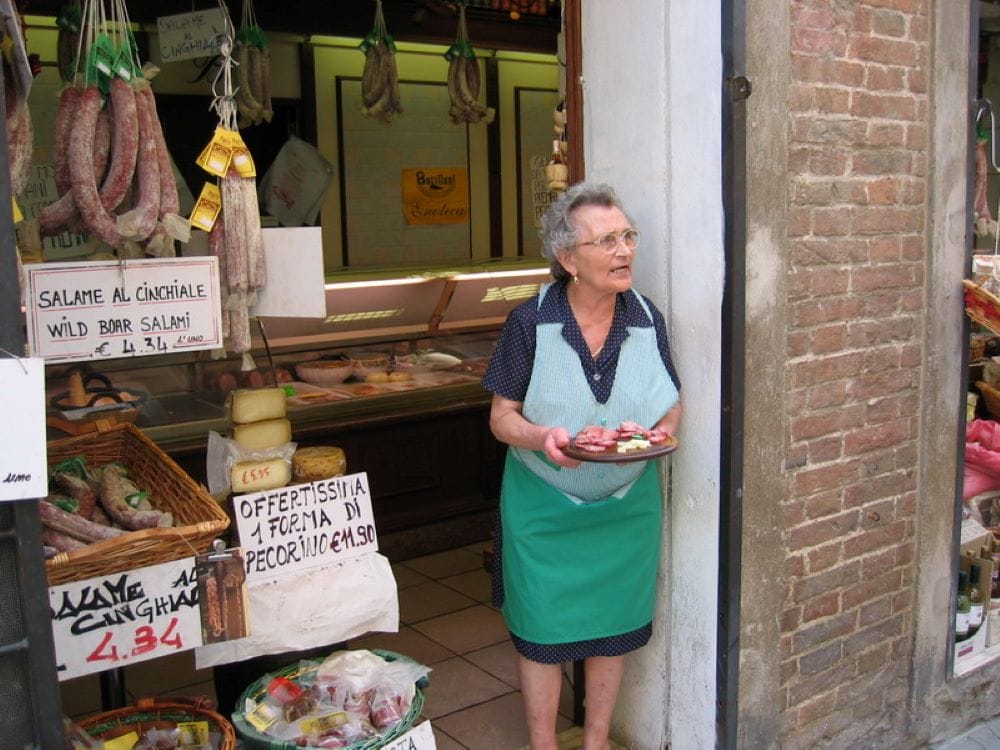
Wild boar salumi is a delicious alternative to cinghiale alla cacciatora. Photo credit: picdrops
Vegetable minestrone (all of Italy)
The first cold of the year marks the start of the classic minestrone di verdure, or vegetable soup made with vegetable broth. Found throughout all of Italy, each region, city, even each cook, has their own recipe and take on the traditional dish. Usually this is based on the local vegetables and harvest, but in each minestrone there is a common denominator that’s usually celery, onion and carrots, zucchini or potatoes.
And after? Prepare for winter with 6 Italian foods perfect for a winter day!
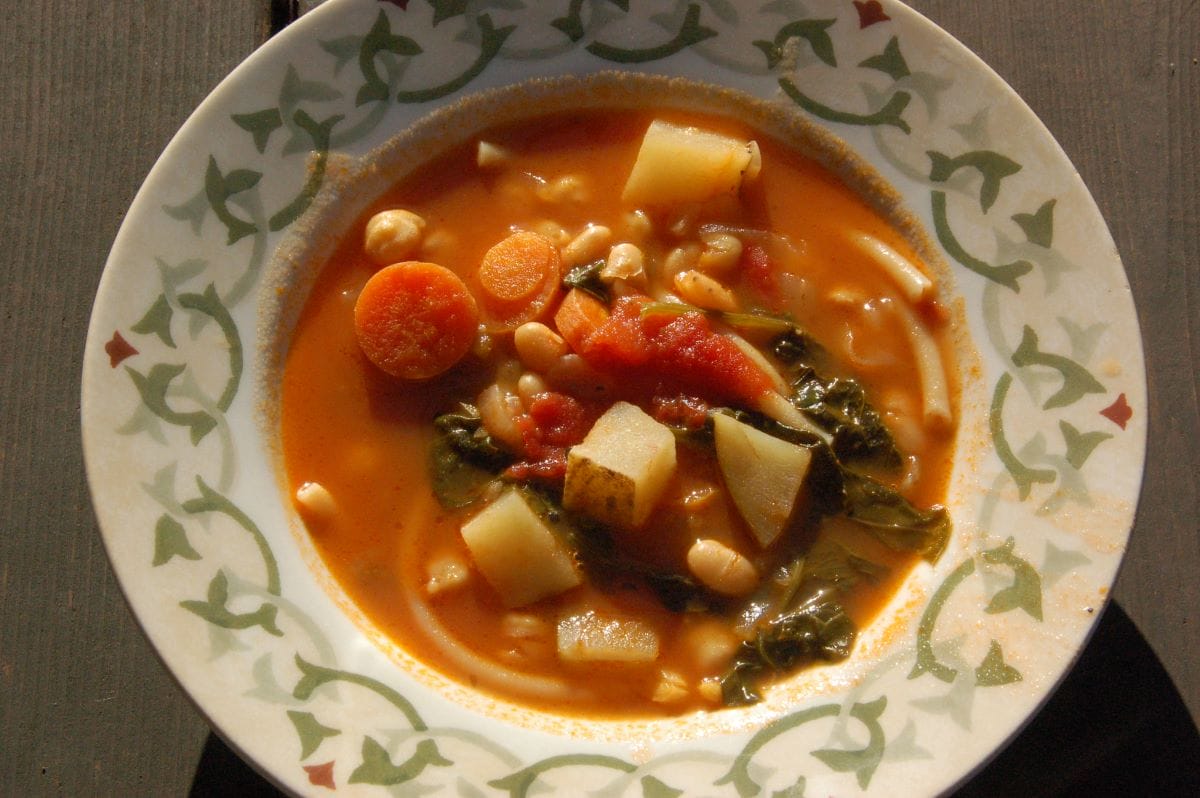
There’s nothing like a warm soup on a fall day. Photo credit: Bob
Strudel di mele in Trentino-Alto Adige
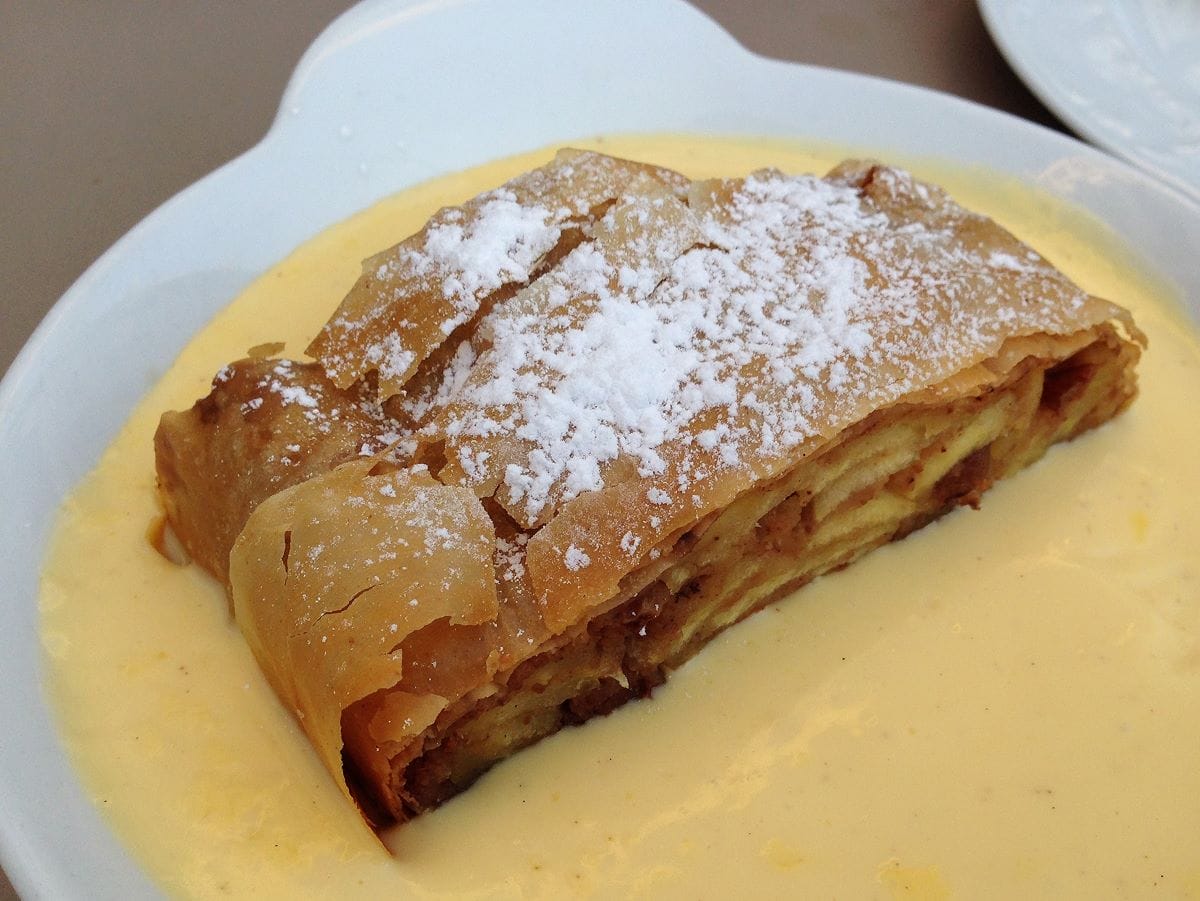
The apple strudel is similar to the American apple pie, but with a thinner, flakier crust. Photo credit: Jason M. Ramos
Straddling the border between Italy and Austria, Trentino-Alto Adige has adapted the classic Austrian apple strudel into it’s every day diet – every day in fall at least! In the strudel, a warm, thin crust wraps around a mix of cooked apples, cinnamon and often pine nuts or raisins. Trentino cultivates DOP apples or Denominazione di Origine Protetta, protected origin status, and the Golden Delicious apples grown there are just sweet enough for this delicious fall dessert.
Biscotti totò in Sicily
Biscotti Totò are a typical Sicilian cookie made exclusively in the autumn. More specifically, these are made to celebrate All Souls Day, or Day of the Dead, on November 2 and their smell in Sicily reminds many of the true start of autumn, when even the south begins to cool down. In fact, these cookies are also called “biscotti dei morti” or “cookies of the dead”.
Don’t let the name scare you off, these are made to cheer up family members sad about the loved ones they’ve lost and transform the morose holiday into a reason to celebrate. Plus, they’re delicious!
Irregular round balls of chocolate, often with cinnamon added, are covered in a chocolate glaze or non-chocolate styles are covered with a lemon glaze. When these fill the windows of Sicilian pasticceria, you know that autumn is in full swing!
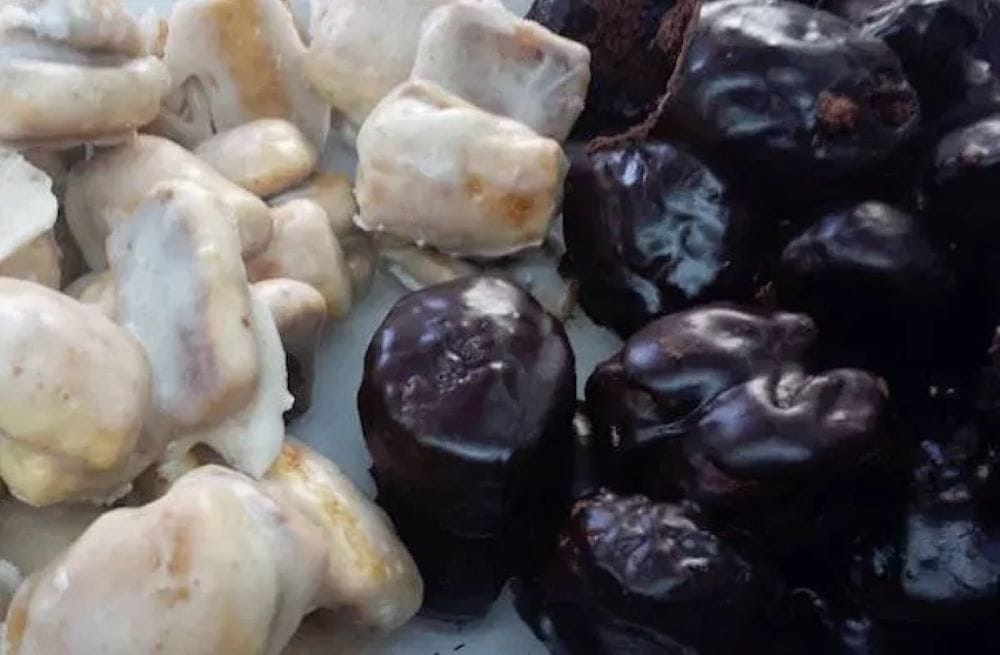
Legend has it that the name comes from the first person to ever try these cookies, Salvatore. Totò is a common nickname in Sicily for Salvatore. Photo credit: Panificio Astone.
Update Notice: This article was updated on October 26, 2023.
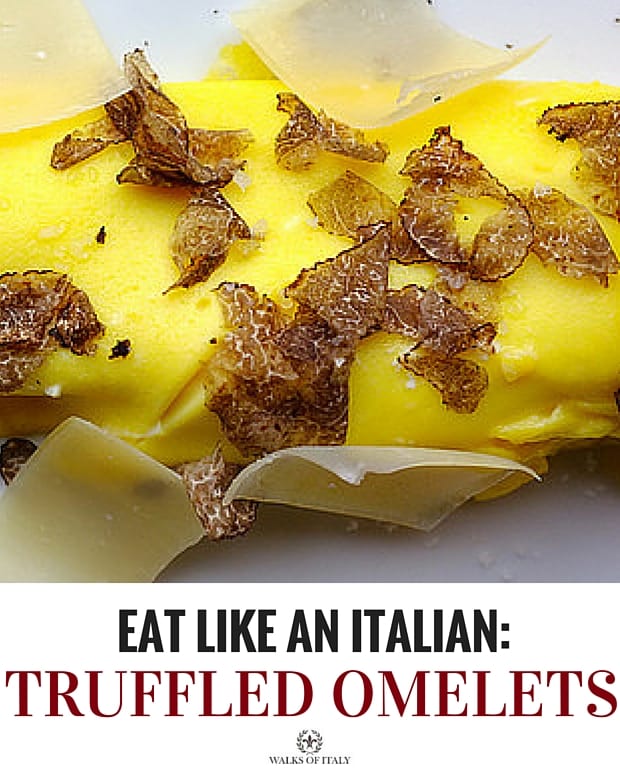

by Gina Mussio
View more by Gina ›Book a Tour

Pristine Sistine - The Chapel at its Best
€89
1794 reviews

Premium Colosseum Tour with Roman Forum Palatine Hill
€56
850 reviews

Pasta-Making Class: Cook, Dine Drink Wine with a Local Chef
€64
121 reviews

Crypts, Bones Catacombs: Underground Tour of Rome
€69
401 reviews

VIP Doge's Palace Secret Passages Tour
€79
18 reviews

Legendary Venice: St. Mark's Basilica, Terrace Doge's Palace
€69
286 reviews










